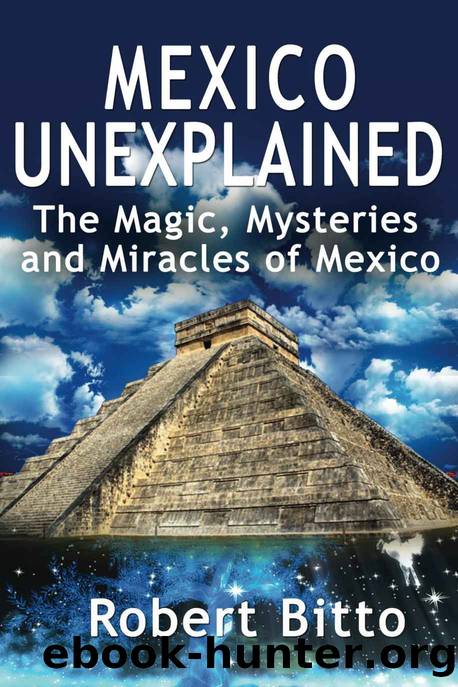Mexico Unexplained by Robert Bitto

Author:Robert Bitto [Bitto, Robert]
Language: eng
Format: azw3
Published: 2017-10-27T00:00:00+00:00
The doña did speak with her friends and one person of note whom she told of her meeting with Frémont was Andrés Pico, the younger brother of former governor Pio Pico, who put him in charge of California while he left to make an appeal to the federal authorities to send more Mexican troops to support the war in the province. As the person in charge, Doña Bernarda urged Andrés Pico to meet with Frémont to sign a capitulation treaty. He agreed to do so.
While writing about the days of the treaty, Frémont also said about Doña Bernarda: "I found that her object was to use her influence to put an end to the war, and to do so upon such just and friendly terms of compromise as would make the peace acceptable and enduring."
Doña Bernarda accompanied Frémont to a small rancho near modern-day Universal Studios to witness the signing of the capitulation treaty that she had a major hand in authoring and brokering. The day was January 13, 1847 and it was pouring rain. The house at the rancho was abandoned and from out of the kitchen the signers of the treaty took a small wooden table to sign the documents on. Doña Bernarda and other influential californios stood under the porch and witnessed the peaceful transfer of power to the Americans. At the end of the day, in accordance with the treaty, Frémont even returned Doña Bernardaâs horses to her. She was allowed to keep her properties and businesses and her family flourished under the new regime enjoying the rights and privileges she had secured in her fateful two hour meeting with Frémont. John C. Frémont amassed great wealth during the California Gold Rush and with the alliances he had made with the californios starting in that Santa Barbara hotel, Frémont realized his political career, becoming one of the first two US senators from the new state of California in 1850 and later the Republican Partyâs nominee for President of the United States in 1856. Doña Bernarda RuÃz de RodrÃguez who was born a subject of the Spanish Crown, became a Mexican citizen and then proudly became an American, died peacefully in her Santa Barbara home in 1880 at the age of 78.
The table on which the Treaty of Cahuenga was signed is now in the Natural History Museum of Los Angeles County, safely protected under glass and illuminated with a bright light. While it really didnât belong to Doña Bernarda, and she didnât have a seat at it either literally or figuratively, what was done on that kitchen table on that rainy day in California back in January of 1847 was the doñaâs doing. That was her treaty. That was her moment. And that was her table.
Download
This site does not store any files on its server. We only index and link to content provided by other sites. Please contact the content providers to delete copyright contents if any and email us, we'll remove relevant links or contents immediately.
| Coloring Books for Grown-Ups | Humor |
| Movies | Performing Arts |
| Pop Culture | Puzzles & Games |
| Radio | Sheet Music & Scores |
| Television | Trivia & Fun Facts |
Atlas Obscura by Joshua Foer(2934)
The Earth Chronicles Handbook by Zecharia Sitchin(2204)
The Book Of Lists by Wallechinsky David & Wallace Amy(2111)
The Right Way to Do Wrong by Harry Houdini(1914)
Badass Affirmations by Becca Anderson(1884)
The Book of Common Fallacies by Philip Ward Julia Edwards(1604)
Elephants on Acid by Boese Alex(1580)
Elephants on Acid: And Other Bizarre Experiments by Alex Boese(1576)
The Mystery of the Exploding Teeth by Thomas Morris(1557)
Atlas of Improbable Places by Travis Elborough(1518)
A Christmas Cornucopia by Mark Forsyth(1443)
I'm So Full of Happy Today by Martin Andersen & Moira Tuffy(1433)
Big, Bad Book of Botany : The World's Most Fascinating Flora (9780062282767) by Largo Michael(1370)
The Mysteries of Mithra by Cumont Franz(1340)
Wild Talents by Charles Fort(1320)
Breaking History by Sarah Pruitt(1290)
How Things Are Made by Andrew Terranova & Sharon Rose(1263)
A Cookie to Celebrate by Jana Douglass(1217)
John A Keel by 2002 The Complete Guide to Mysterious Beings(1187)
